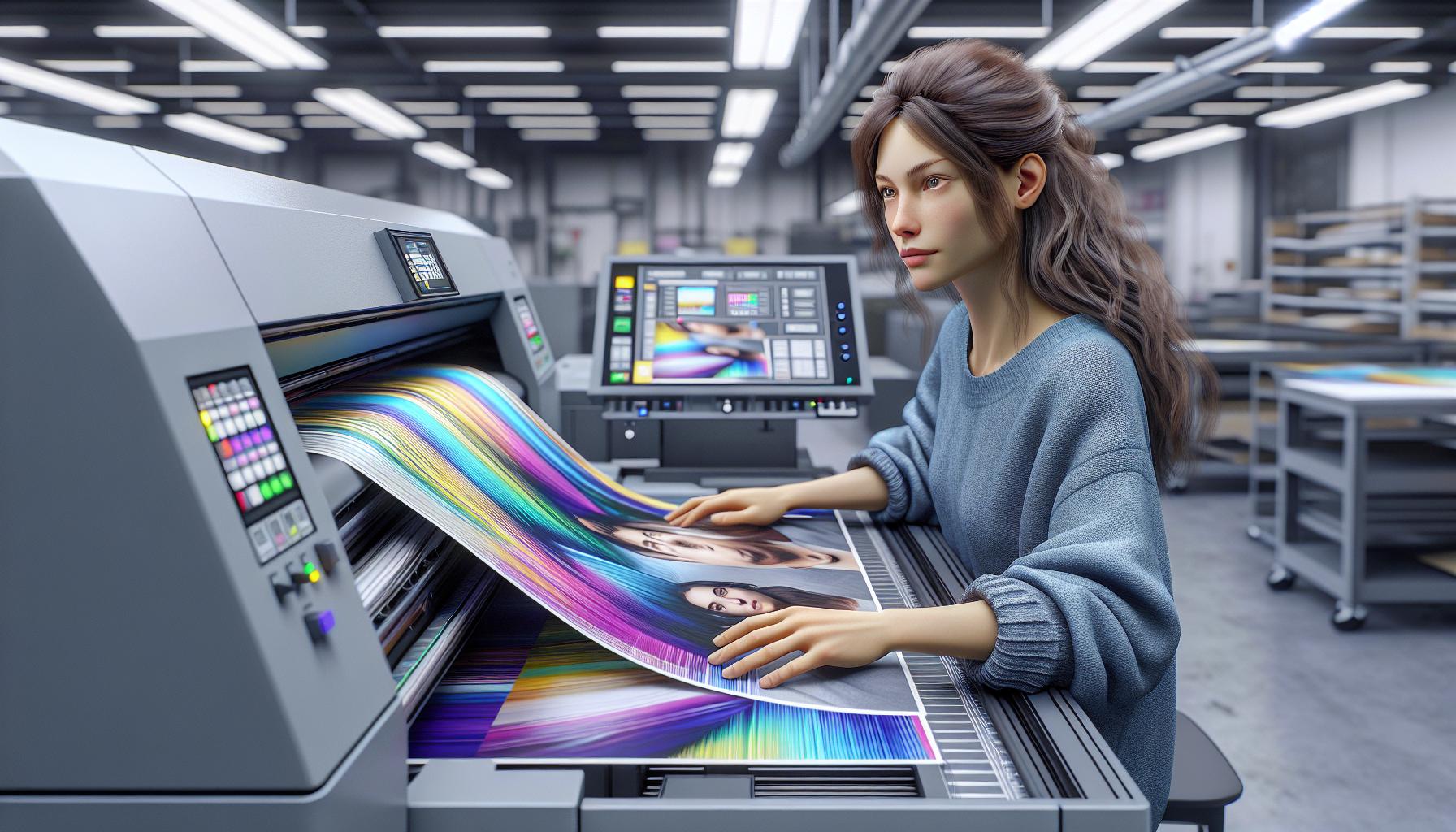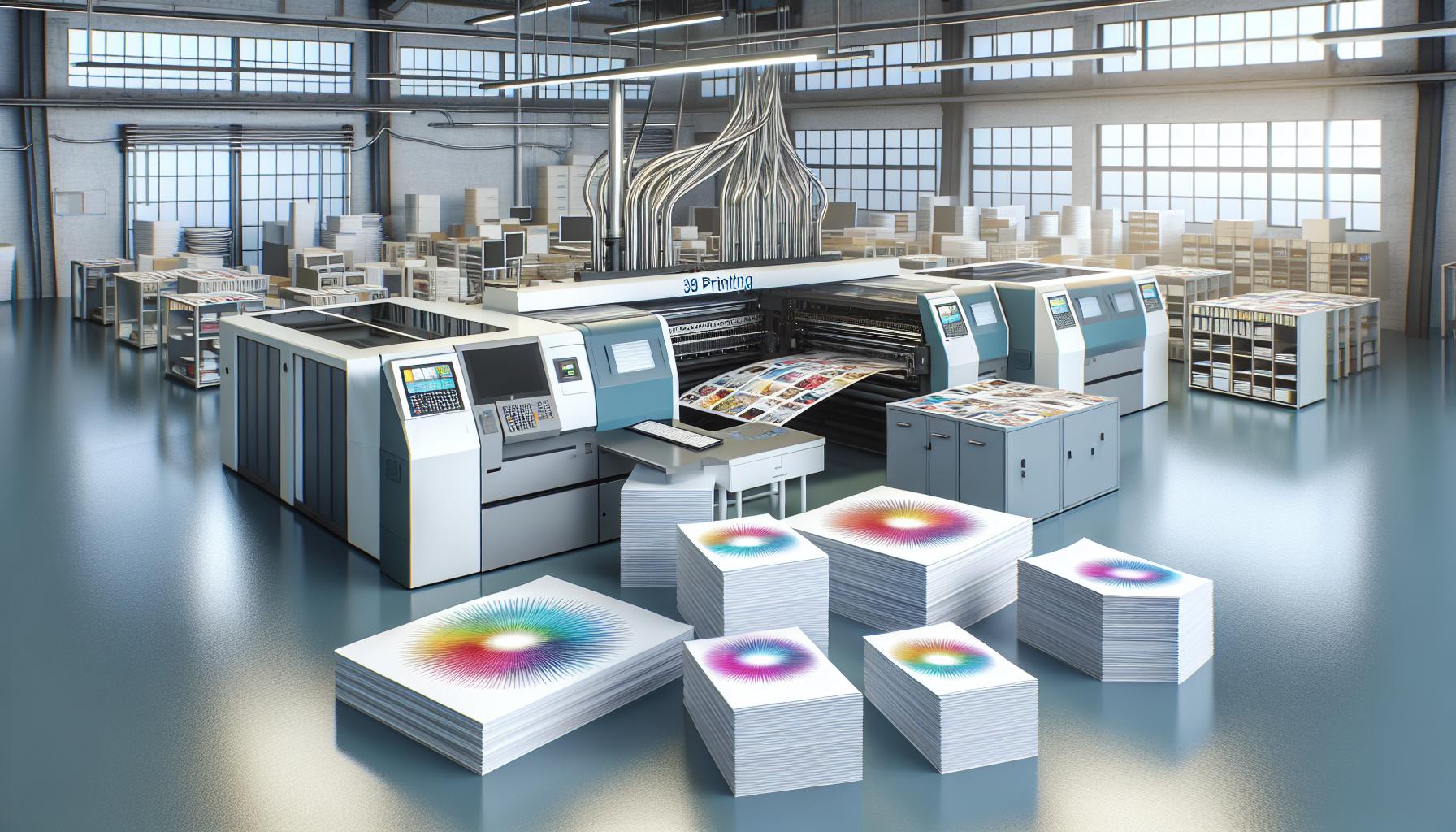Physical Address
304 North Cardinal St.
Dorchester Center, MA 02124

Digital print media has revolutionized the way businesses and individuals communicate their messages to the world. This modern printing technology enables direct digital-based images and text to transfer onto various materials with unprecedented speed and precision. From marketing materials to personal photo books the possibilities seem endless.
The transformation from traditional to digital printing methods marks a significant shift in the industry. Unlike conventional printing which requires plates and setup time digital printing offers on-demand solutions with minimal waste and quick turnaround times. It’s become an essential tool for businesses looking to create personalized marketing materials short-run publications and customized promotional items while maintaining cost-effectiveness and high quality.
Digital print media transforms digital files into physical printed materials through computerized printing systems. This technology enables direct printing from digital sources onto paper, fabric, plastic or metal surfaces without intermediate steps.
| Benefit | Impact |
|---|---|
| Turnaround Time | 24-48 hours for standard jobs |
| Minimum Order | As low as 1 piece |
| Customization | 100% variable data capability |
| Setup Costs | 60-80% lower than offset |
| Waste Reduction | Less than 5% material waste |
Digital print media connects with:
This technology enables businesses to create targeted print materials, maintain brand consistency across channels or produce materials on demand while reducing inventory costs.

Print technology has transformed from mechanical processes to digital systems over the past 50 years. This evolution marks significant changes in speed, quality, and capabilities of printing processes.
The shift from traditional to digital printing revolutionized the printing industry in the 1990s. Traditional offset printing relied on metal plates pressing ink onto paper through mechanical processes, while digital printing eliminates plates by using electrostatic charges to transfer toner directly onto substrates. This transition reduced setup times from 6 hours to 15 minutes increased printing flexibility for small runs of 500 copies or less.
| Printing Method | Setup Time | Minimum Run |
|---|---|---|
| Traditional | 6 hours | 1,000 copies |
| Digital | 15 minutes | 1 copy |
Digital printing technology advanced through several milestone innovations:
These advancements transformed digital printing from basic document reproduction to sophisticated commercial production systems capable of matching offset quality while offering enhanced flexibility customization options.
Digital print media delivers measurable advantages for businesses through advanced technology and streamlined processes. The integration of digital printing solutions transforms traditional printing constraints into opportunities for growth and efficiency.
Digital printing eliminates costly setup fees associated with traditional printing methods, reducing overhead expenses by 40-60%. Print-on-demand capabilities enable businesses to order exact quantities, preventing waste from minimum order requirements. The streamlined workflow cuts production time from 5-7 days to 24-48 hours, optimizing resource allocation and inventory management.
| Cost Factor | Traditional Printing | Digital Printing |
|---|---|---|
| Setup Costs | $500-1,000 | $50-100 |
| Minimum Order | 500+ units | 1+ units |
| Turnaround Time | 5-7 days | 24-48 hours |
| Waste Percentage | 15-20% | 2-5% |
Digital print media enables variable data printing for targeted marketing campaigns with personalized elements such as names, addresses or custom graphics. The technology supports:
Each print piece maintains consistent quality while incorporating personalized elements, achieving response rates 35% higher than generic materials. The advanced color management systems ensure brand colors remain exact across multiple prints, maintaining professional standards for customized materials.
Digital print technology enables diverse applications across multiple industries with customizable outputs for specific business needs. The versatility of digital printing creates opportunities for both commercial enterprises and creative professionals.
Commercial digital printing produces essential marketing materials with quick turnaround times and high-quality results. Common applications include:
Print-on-demand technology transforms the publishing industry by eliminating large print runs and warehouse storage. Key applications include:
| Application Type | Print Technology | Turnaround Time | Minimum Order |
|---|---|---|---|
| Marketing Materials | UV-LED Digital | 24-48 hours | 25 pieces |
| Business Cards | Digital Offset | 1-2 days | 100 cards |
| Books | Digital Web Press | 3-5 days | 1 copy |
| Large Format | Inkjet | 1-3 days | 1 piece |
Digital printing technologies demonstrate significant environmental advantages compared to traditional printing methods. Modern digital printing processes reduce carbon footprints by 75% while maintaining high-quality output standards.
Digital printing equipment operates with energy-efficient systems that consume 30% less electricity than conventional offset presses. Key sustainability features include:
Digital printing minimizes material waste through precise production controls. Statistics show significant waste reduction:
| Waste Category | Traditional Printing | Digital Printing |
|---|---|---|
| Paper Waste | 20-30% | 2-5% |
| Chemical Waste | 15 gallons/month | 0 gallons/month |
| Setup Waste | 250-500 sheets | 1-5 sheets |
| Inventory Waste | 15-25% | Less than 1% |
Digital print media continues to evolve with technological advancements and changing market demands. The industry’s transformation focuses on automation, sustainability and enhanced customization capabilities.
Advanced digital print technologies reshape production capabilities and efficiency:
Digital print media market metrics indicate significant expansion:
| Metric | Value | Timeline |
|---|---|---|
| Global Market Size | $35.7 billion | 2024 |
| Projected Growth Rate | 6.8% CAGR | 2024-2030 |
| Digital Textile Printing | $2.7 billion | 2025 |
| Variable Data Printing | $22.5 billion | 2026 |
Key growth drivers include:
Digital print media has revolutionized the printing industry with its efficient on-demand solutions and extensive customization capabilities. The technology’s ability to reduce costs minimize waste and deliver quick turnaround times makes it an invaluable tool for modern businesses.
As sustainability becomes increasingly important digital printing stands out with its eco-friendly processes and reduced carbon footprint. With emerging technologies like AI integration and 3D-enabled printing the future of digital print media looks promising. The projected market growth and continuous technological advancements ensure that digital printing will remain at the forefront of communication and marketing solutions.
The transformation from traditional to digital printing methods represents more than just technological progress – it’s a fundamental shift in how businesses approach their printing needs and engage with their audiences.